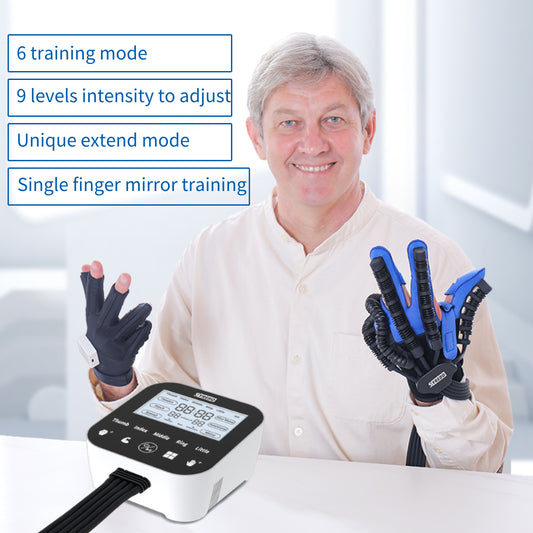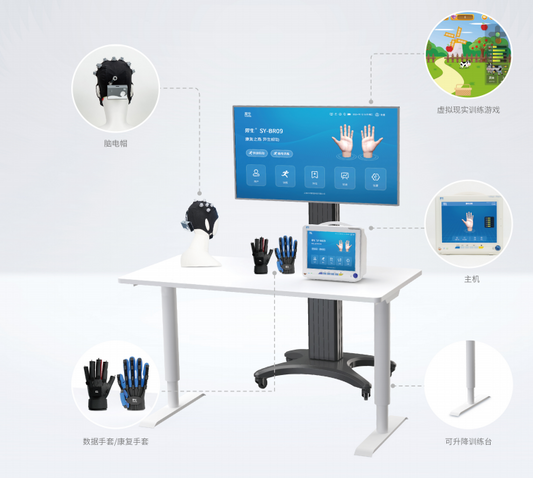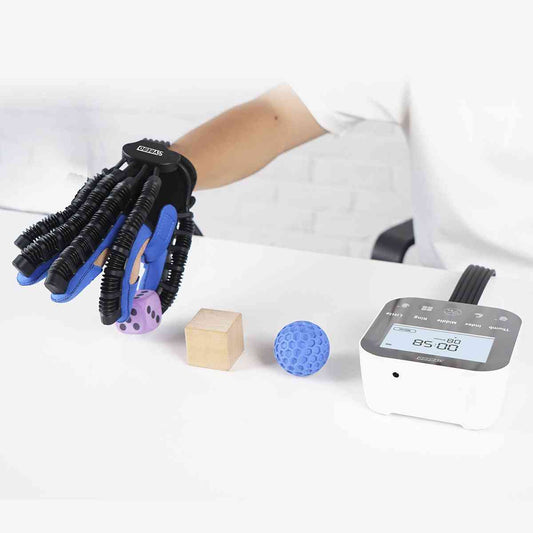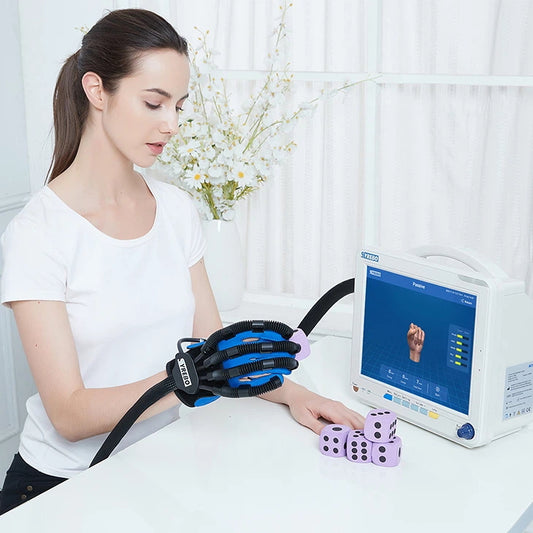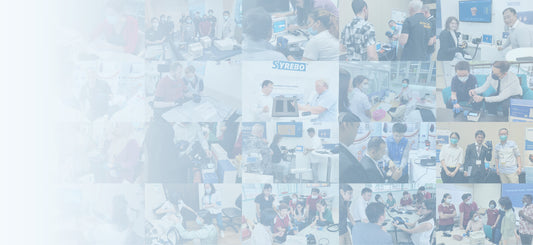Do rehabilitation robot gloves for stroke work?
Abstract
In people’s daily living activities, hands play an important role. However, a stroke, incomplete spinal cord injury, brachial plexus injury, Parkinson’s disease, or muscular dystrophy may cause impairment of the hand, which will lead to the loss of hand function. Car accidents or work injuries may also result in hand impairments. A practical solution for patients would be rehabilitation exercises, whereas the lack of rehabilitation devices and one-on-one counseling treatment supplied by medical practitioners usually cannot guarantee the training intensity for patients. Over the past decades, developments in robotics have enabled them to be an important part in the rehabilitation training process.
So far, robotic rehabilitation gloves are the focus of research: soft assistive gloves. Soft wearable rehabilitation gloves are fabricated by soft materials, mainly driven by cable, intelligent material, or a pneumatic/hydraulic elastomeric actuator, which enables a jointless soft structure for the hand to be comfortable and much safer. With many advantages such as their light weight, portable nature, high power-to-weight ratio, low cost, and excellent human–machine interaction, soft wearable gloves are expected to be more suitable and prospective for hand rehabilitation training than their rigid counterparts. Soft rehabilitation gloves can bring certain positive effects and improve the patient’s hand rehabilitation treatment, reduce the economic burden of patients, and enable the patient to return to society and family as soon as possible.
Many individuals with hand paralysis who retain wrist motor function can generate a type of passive grasp called tenodesis grasp. This passive grasp relies on the weak elasticity of the hand muscle fibers and of the connective tissue elements composing the muscle-tendon-bone unit. Tenodesis grasp functions by contracting extensor muscles in the wrist and forearm through wrist extension. This action pulls the finger tendons towards the wrist, forcing a bending moment, which can be employed to produce a grasping posture in the paralyzed hand. The passive forces produced by a tenodesis grasp are weak and generally only sufficient to lift lightweight objects when the forearm is supinated and gravity is assisting. An active grasp would therefore benefit stroke recovery and SCI (Spinal Cord Injury) patients by allowing them to lift heavier objects and manipulate them in free space.
Keywords: Exoskeleton, Hand Therapy, Neurorehabilitation, Soft Robotic Glove, Technology
Syrebo robotic glove for stroke patients is suitable for the patients with hand dysfunction such as stroke,hemiplegia after cerebral infarction,peripheral nerve injury of hand,orthopedic surgery,spinal cord injury,hand burn,children cerebral palsy,etc.
It combines with flexible robot technology and neuroscience, syrebo stroke glove can help patients master fingers flexion and extension, reduce hand muscle tension, relieve edema and stiffness, promote rehabilitation of brain nerve injury through exercise, improve hand activity and accelerate the rehabilitation of hand function.
Introduction
Robotics is currently proposed as a non-invasive solution to enhance hand functionality by means of wearable, actuated platforms, namely robotic exoskeletons, which are able to move the hands of the impaired users and assist functionality. A number of robotic exoskeletons for the distal upper limb have been designed over the past years, which can be classified based on their actuation principles, materials employed, complexity, and integrated functions. Many of these devices rely on rigid linkages, which require careful alignment with the human joints to safely and effectively transfer their robust and reliable forces and torques to the wearer. Rigid exoskeletons are well-suited for challenging clinical scenarios, e.g., rehabilitation of the wrist, the hand , and the individual fingers (for exhaustive reviews see ), however the design trade-off for high forces that characterize these rigid mechanical designs is their limited portability due to the weight of the electromechanical actuators and their rigid frames. Consequently, most of the existing training systems are stationary, designed for in-clinic use, and require experienced personnel to oversee the patient’s safety and wellbeing during usage.
Compliant, lightweight, and mobile devices designed for home-use provide a new paradigm of assistive devices. Cable-driven transmissions enable reduced weight and increased compliance of wearable, robotic systems. This approach relieves the distal extremities from heavy actuation units and electronics by relocating them to more convenient locations, retaining rigid frames or replacing them with polymer-based or fabric-based structures, thereby increasing the portability, comfort, and usability of the devices. While cable-driven systems have been developed to improve usability, reduce weight, and maximize compliance, the inevitable tradeoff is diminished strength and accuracy compared to traditional, rigid exoskeletons. A limited number of research groups successfully demonstrated cable-driven wearable robots to assist hand function in SCI and stroke survivors. Additionally, robotic soft rehablitation gloves have been employed instead of traditional physical therapy.These recent efforts offer the potential for safe, comfortable, lightweight and cost-effective devices that can provide users with at-home assistance or rehabilitation activities for prolonged periods.
Method
Compared Traditional Therapy And Soft Robotic Therapy
In fact, traditional and boring rehabilitation training often fails to bring about ideal rehabilitation effects. It once brought a huge psychological blow to patients, and many patients even gave up rehabilitation training voluntarily. In response to this pain point, we transformed advanced scientific research results, cooperated with enterprises in industry, academia and research, and developed soft rehabilitation robot gloves. This is a smart device for the rehabilitation of hand movement functions in stroke patients. It has multiple functions such as master-slave rehabilitation, passive rehabilitation, virtual reality games, and rehabilitation assessment. Different from traditional treatment methods that require the assistance of physical therapists, patients can complete the entire rehabilitation training process independently through soft rehabilitation robot gloves, which makes rehabilitation training more convenient and greatly reduces the cost of rehabilitation training.
Among many traditional rehabilitation therapies, "mirror therapy" is a very effective method. Generally speaking, during mirror rehabilitation therapy, patients are asked to place their affected hand behind a mirror to block it. The healthy hand moves in front of the mirror. When the patient looks in the mirror, he will feel that his affected hand is making the same movements as the healthy hand at the same time. One of its main rehabilitation mechanisms is that movement observation forms visual feedback, activates the motor cortex, and promotes the plasticity recovery of the cerebral cortex.
Can the "false image" in the mirror be turned into a "true image" in reality? Starting from this point, the R&D team combined "master-slave control", a relatively mature technology in the field of robotics, to create a prototype of soft rehabilitation robot gloves. A master-slave wearable hand exoskeleton solution is proposed to facilitate patients to complete mirror rehabilitation training alone.
It is understood that this solution allows the healthy hand of a hemiplegic patient to wear a motion information collection device as the "master hand", and the paralyzed hand to wear a robotic exoskeleton as the "passive hand", so that the master hand can control the slave hand to complete mirror rehabilitation training. Compared with traditional mirror therapy, patients observe the real rehabilitation movement of the affected hand instead of the "artificial image" in the mirror. This kind of visual feedback should stimulate the cerebral cortex more significantly and effectively. Moreover, the real movement of the affected hand driven by the exoskeleton will further enhance the rehabilitation effect.
The traditional rigid exoskeleton has the disadvantages of being large in size and weight, and because the body material is "cold" metal, the human-machine physical interface is unfriendly and uncomfortable to wear. Considering that while ensuring the functionality of the exoskeleton, it can also bring more humane care to patients. With the recent emergence of "soft robot" technology, a pair of "warm" rehabilitation gloves may be able to solve the discomfort during the rehabilitation process.
Unlike traditional rigid exoskeletons, the main body of soft rehabilitation robot gloves is made of cloth made of everyday glove materials. The gloves on the active end are equipped with flexible sensors that can collect finger movement information, which is equivalent to data gloves; the gloves on the slave end use a line drive method to imitate the drive method of human muscles. When wearing a soft glove device, it is like putting on clothes. The sensor of the active glove can accurately capture the movement of each finger of the patient's healthy side. Combined with wireless data transmission, the host then controls the slave glove to assist the affected hand to complete the same movement.
Conclusion
The rehabilitation robotic gloves will undergo further research and development in the future and will integrate an electrical stimulation system to realize electrotactile perception and feedback functions, making the entire rehabilitation process more in line with human physiological mechanisms and forming a closed loop between upward perception and downward movement, which is expected to be more effective Promote the recovery of neuroplasticity and enhance the recovery effect.


